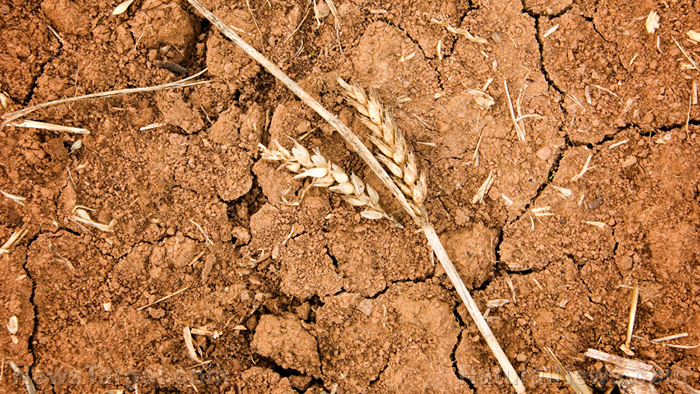Western Kansas wheat crops are DEAD: "There's nothing out there," says farmer
By ethanh // 2022-06-23
Tweet
Share
Copy

In a normal year, America's heartland would be brimming with lush, green wheat crops – but this is not a normal year.
According to reports, western Kansas is a wasteland of parched, dead fields. Wheat crops have been decimated, which means the American food supply will suffer yet another major blow.
"There's nothing out there," says Vance Ehmke, a wheat farmer from Lane County. "It's dead. It's just ankle-high straw."
Ehmke's farm is one of many that, after being planted several months ago, now looks like a dust bowl. Rows of brown, shriveled plants nest in hardened dirt that is now scarred with deep cracks due to a lack of water combined with the relentless beating sun.
If there was ever a year for this not to be happening, this is the year. Global wheat supplies are already being strangled by numerous factors, including the war in Ukraine. And now a major wheat production region of the United States is facing near-total desolation.
For the farmers in western Kansas that somehow generate a crop, they will likely end up with far fewer bushels than they had last year. Current estimates suggest that one out of every 10 wheat fields in that part of the state will be abandoned this year due to the drought.
USDA says wheat fields across Kansas will generate 25% fewer bushels this year, with even worse yields on the western half of the state
Back in March, wheat prices reached an all-time high of $13 per bushel, which might seem like it will help farmers who end up with smaller yields this year – but it is not that simple. The U.S. Department of Agriculture (USDA) says that across the state of Kansas, wheat fields will average about 25 percent fewer bushels per acre overall. Last year, Kansas wheat fields generated about 52 bushels per acre, but are only expected to produce 39 bushels per acre this year. In the western part of the state, yields are expected to be even lower than that. In Lane County, for instance, the USDA is projecting an average of 27 bushels per acre, which is less than half of what the county averaged in 2021. "At $11 per bushel, each acre of that average Lane County farmer's land would bring in just under $300 this season," reports explain. "In order to recoup the costs of doing business, Ehmke said farmers here need to gross closer to $325 per acre." Ehmke says he expects his farm to produce more than 27 bushels per acre this year, which he credits to his decision to let the land rest between plantings. Even so, it could still produce only about half of the normal crop. "They're losing money," Ehmke says about fellow farmers in the area, many of whom will not even generate enough wheat this year to break even, "even with the highest price of wheat that we've probably ever seen in the past 50 or 100 years." Costs for everything, from the diesel needed to run tractors to the fertilizer needed to grow the wheat, have all skyrocketed this past year. Nitrogen, for instance, reached record levels this spring, peaking above $1,500 per ton which is more than twice what it cost last year. "It'll be a very difficult year," says Rejeana Gvillo from the Farmers Business Network. "Just because commodity prices are high, it does not mean that producers are better off." Gvillo traveled across Kansas last month to survey crops from east to west, and she says western Kansas has a "shorter crop" and "uglier fields." "As we drove west, it just got way worse," she added. You can keep up with the latest news about the food crisis at FoodCollapse.com. Sources for this article include: StrangeSounds.org NaturalNews.comTweet
Share
Copy
Tagged Under:
collapse hunger catastrophe starvation food supply famine kansas failure wheat crops harvest food crisis scarcity food scarcity wasteland
You Might Also Like
Largest produce market in Paris erupts in flames, as arson attacks on food supply continue
By Lance D Johnson // Share
JPMorgan CEO: Vetoing fossil fuel projects would send US into a death spiral
By Mary Villareal // Share
Recent News
Not just weight: What does metabolic health actually look like?
By willowt // Share
The unspoken realities of menopause's most common symptoms
By willowt // Share
Trump's America First foreign policy faces scrutiny as global conflicts escalate
By kevinhughes // Share
Treasury Secretary Bessent: Tariff revenues may surpass $500 billion annually
By lauraharris // Share
DHS Secretary Kristi Noem reports ZERO illegal border crossings for three consecutive months
By lauraharris // Share











